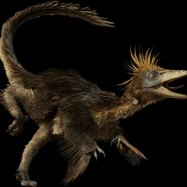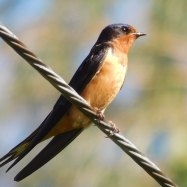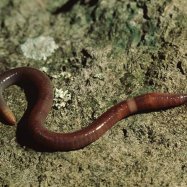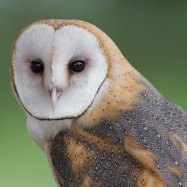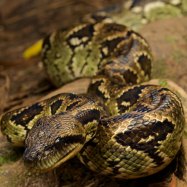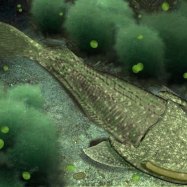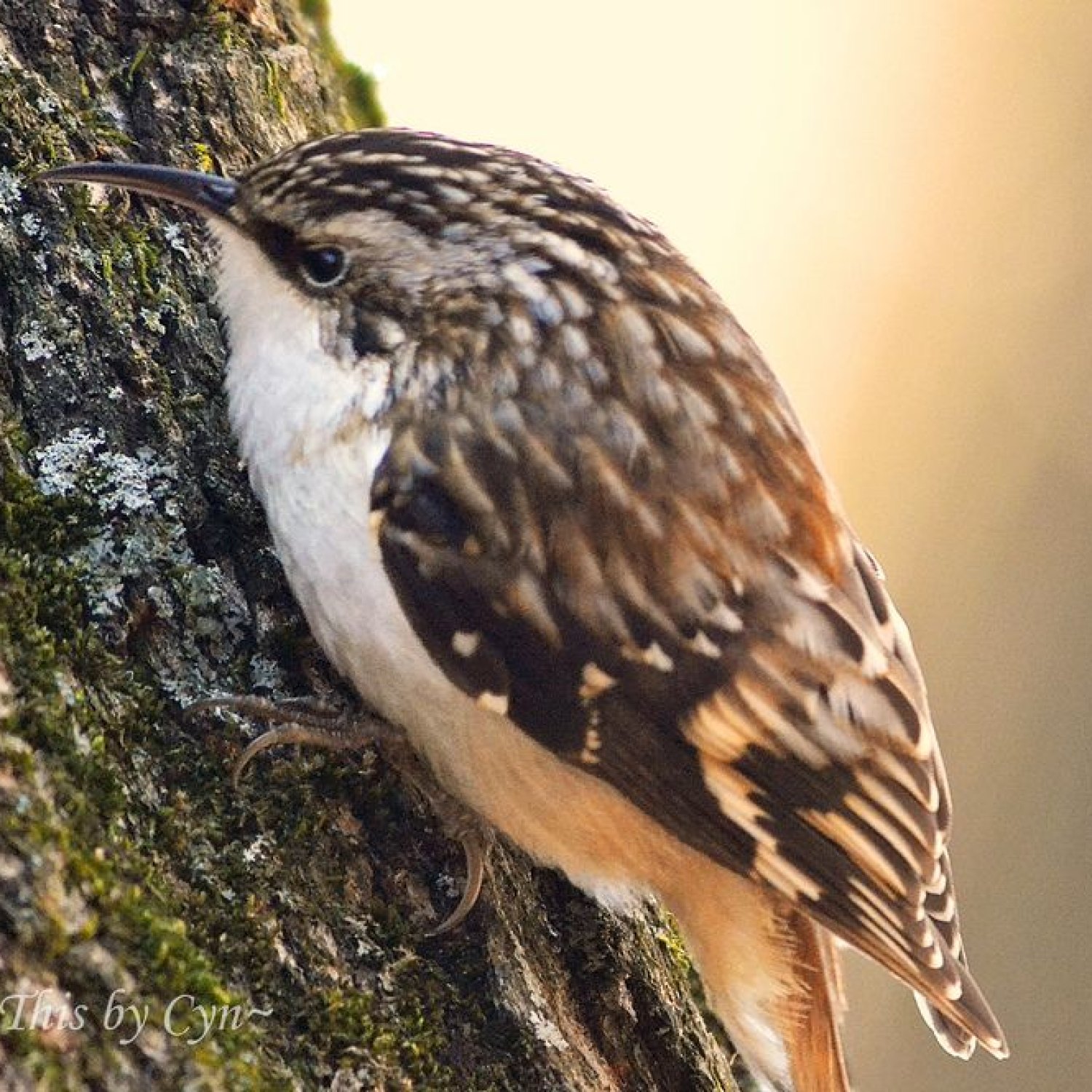
Treecreeper
12-14 cm
The Treecreeper, a slender bird with a curved bill, is a common sight in England. At only 12-14 cm in length, it may be small, but it can easily hop up and down trees looking for insects. Belonging to the Certhiidae family, this tiny avian is a master of camouflage and a delight to spot in the wild. Its unique body shape allows it to blend in seamlessly with the bark of trees. Keep an eye out for this little beauty on your next hike! #Treecreeper #Birdwatching #Naturelovers #England
Animal Details Summary:
Common Name: Treecreeper
Kingdom: Animalia
Habitat: Woodland, forests
Unlocking the Mysteries of the Treecreeper: The Hidden Secrets of this Fascinating Bird
It is often said that some of the greatest treasures of nature are the ones that are hidden in plain sight. This statement could not be truer when it comes to the treecreeper, a small, unassuming bird found in woodlands and forests all across Europe, Asia, and North Africa. While its appearance might not be as breathtaking as that of a peacock or a flamingo, the treecreeper is a truly remarkable bird with a rich history and some incredible features that are worth exploring.Let us embark on a journey to uncover the mysteries of this charming creature with the scientific name Certhia familiaris, commonly known as the treecreeper Treecreeper.
The Hidden Kingdom of the Treecreeper
The treecreeper belongs to the Animalia kingdom, a vast category that includes all living organisms with complex cells, capable of movement, and obtaining food through ingestion. Within the animal kingdom, the treecreeper is classified under the Phylum Chordata, which includes all animals with a notochord, a dorsal nerve cord, and pharyngeal slits at some point in their development.As for its class, the treecreeper falls under Aves, or in simpler terms, it is a bird. This puts it in the company of other feathered creatures such as eagles, hummingbirds, and penguins. Like all birds, the treecreeper has two wings, a beak, and a warm-blooded metabolism.
Moving on to its order, the treecreeper is part of the Passeriformes, also known as the perching birds. This is the largest bird order, comprising about 60% of all known bird species. Other familiar birds in this order include sparrows, finches, and crows.
Within the Passeriformes, the treecreeper belongs to the family Certhiidae, which consists of around 10 species of small, insect-eating birds that are known for their distinctive climbing abilities and beautiful songs Telescope Fish. Interestingly, most members of this family are found in the Old World, particularly in Europe and Asia, making the treecreeper a rather special bird.
Discovering the Habitat of the Treecreeper
Despite its widespread distribution, the treecreeper has very specific habitat requirements. These birds are most commonly found in woodlands and forests, where they can easily find their preferred food source – insects.Within these habitats, the treecreeper's favorite spot is on tree trunks. You can often spot it slowly moving up a tree, using its highly adapted curved bill to search for food hidden in crevices and under bark. This unique climbing ability is one of the defining features of this bird and sets it apart from other passerine species.
Interestingly, the treecreeper's feet are also adapted for climbing. Its sharp claws can grip onto bark, while the stiff tail feathers provide support and balance as it moves up and down tree trunks. With its specialized features, the treecreeper can cover a wide area in search of food, making it a highly efficient and effective predator.
Unveiling the Feeding Method of the Treecreeper
As mentioned earlier, treecreepers feed mainly on insects. Some of their favorite prey include spiders, beetles, and caterpillars. They hunt for food by clinging to trees and using their beaks to probe for hidden insects. They can also catch insects in mid-air, showcasing their impressive agility and coordination.Interestingly, treecreepers also have a unique foraging method known as "spiral foraging." This involves them starting at the bottom of a tree and spiraling their way up, skilfully navigating around branches and foliage to search for food. This vertical foraging is another adaptation that sets the treecreeper apart from other birds and makes it a truly fascinating creature to observe.
Exploring the Geographical Distribution of the Treecreeper
As mentioned earlier, the treecreeper is found in Europe, Asia, and North Africa. Within these regions, it is widespread and can be found in a variety of different habitats, as long as there are trees for it to climb on. However, it is most commonly seen in woodland areas, particularly where there are a lot of old, mature trees.While it is not a migratory bird, the treecreeper can move to lower elevations during the colder months, seeking out warmer temperatures and a more abundant food supply. It is also adapted to withstand harsh winters, often hiding in tree crevices or cavities to stay warm and protected.
Uncovering the Origin of the Treecreeper
The treecreeper is a proud native of the United Kingdom, making its home in England. However, as mentioned earlier, it can be found in other countries as well, including many parts of Europe, Asia, and North Africa.In England, the treecreeper is abundant in woodlands and forests, particularly in the southern and central regions. It is also found in some parts of Scotland, Wales, and Northern Ireland, showcasing its adaptability and resilience to different environments.
Examining the Colouration and Body Shape of the Treecreeper
The treecreeper may not be the most colorful bird in the world, but its dull brown and white feathers serve a very important purpose – camouflage. These birds are experts at blending into their surroundings, making them difficult to spot for predators.As for its body shape, the treecreeper has a slender, cylindrical body with a curved bill. This compact body shape allows it to easily maneuver around trees while searching for food. Its curved bill is another specialized feature that helps it pry insects out of tight spaces, making it a highly efficient predator.
Uncovering the Length of the Treecreeper
On average, the treecreeper measures between 12-14 cm, making it one of the smallest birds in its family. Its size, coupled with its brown and white coloring, makes it easy to miss in the dense forest environment. But despite its small size, the treecreeper is a mighty bird with some incredible abilities.In Conclusion
The treecreeper may not have the striking appearance or popularity of other bird species, but it more than makes up for it with its incredible adaptability and unique features. From its specialized climbing abilities to its spiral foraging technique, the treecreeper is a truly remarkable bird that deserves our attention and admiration.Next time you find yourself in a woodland or forest, take a moment to look for this hidden treasure. You never know, you might just catch a glimpse of this charming little bird as it swiftly climbs its way up a tree, uncovering the mysteries of the natural world.

Treecreeper
Animal Details Treecreeper - Scientific Name: Certhia familiaris
- Category: Animals T
- Scientific Name: Certhia familiaris
- Common Name: Treecreeper
- Kingdom: Animalia
- Phylum: Chordata
- Class: Aves
- Order: Passeriformes
- Family: Certhiidae
- Habitat: Woodland, forests
- Feeding Method: Insectivorous
- Geographical Distribution: Europe, Asia, North Africa
- Country of Origin: United Kingdom
- Location: England
- Animal Coloration: Brown, white
- Body Shape: Slender, curved bill
- Length: 12-14 cm
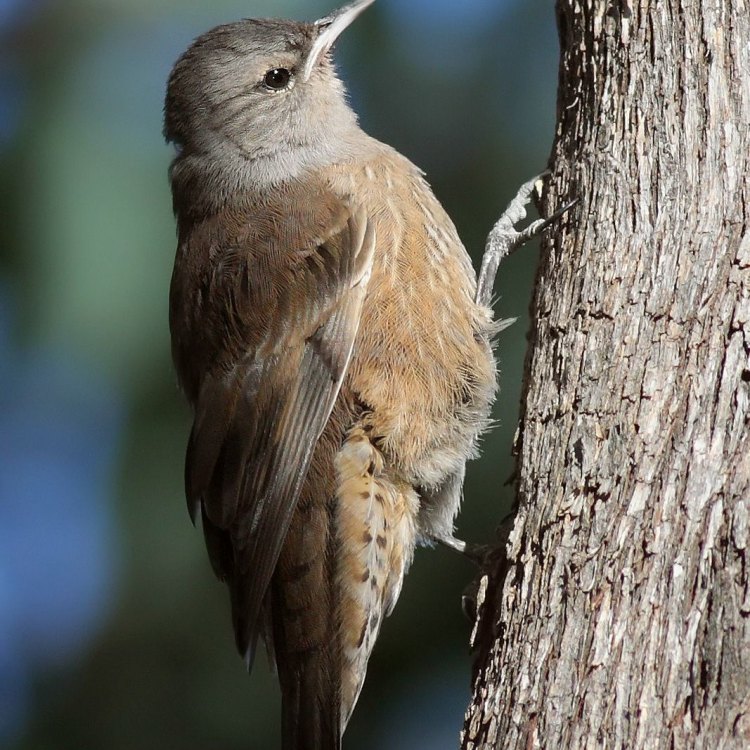
Treecreeper
- Adult Size: Small
- Average Lifespan: 2-3 years
- Reproduction: Monogamous
- Reproductive Behavior: Both parents build nest, female incubates eggs
- Sound or Call: High-pitched, sharp calls
- Migration Pattern: Non-migratory
- Social Groups: Solitary or in small groups
- Behavior: Climbs trees in a spiral pattern
- Threats: Habitat loss, climate change
- Conservation Status: Least Concern
- Impact on Ecosystem: Controls insect populations
- Human Use: None
- Distinctive Features: Long, curved bill, brown and white plumage
- Interesting Facts: Treecreepers can move up and down trees using their stiff tail feathers for support
- Predator: Birds of prey
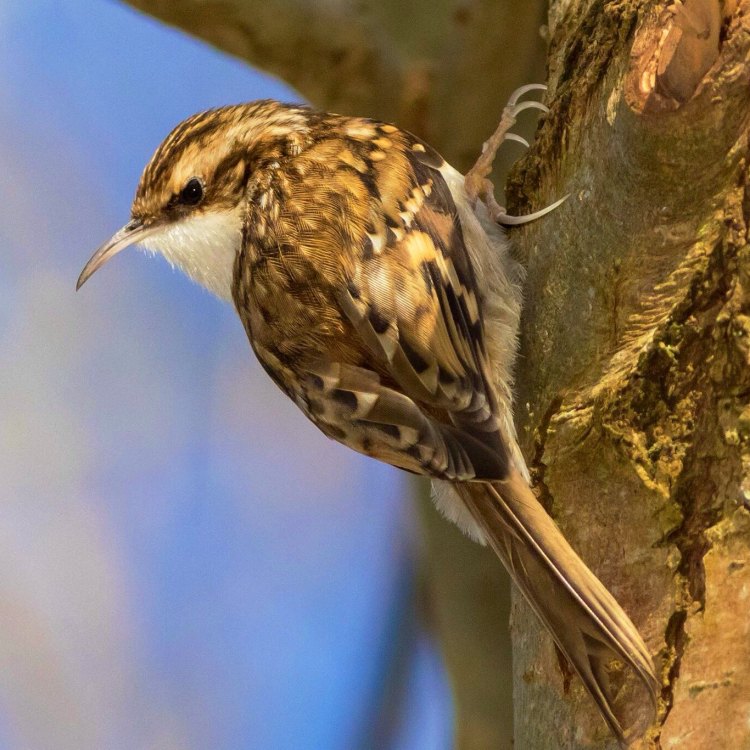
Certhia familiaris
The Fascinating World of the Treecreeper
Nature never fails to amaze us with its diversity and unique species. From the giants of the sea to the tiny creatures of the land, every living being has a role to play in the ecosystem. Today, we will delve into the world of a small yet remarkable bird known as the treecreeper. This avian species may seem unassuming at first glance, but a closer look reveals an array of interesting features and behaviors that make it stand out among other birds PeaceOfAnimals.Com. So, let's spread our wings and explore the world of the treecreeper.The treecreeper, also known as Certhia familiaris, is a small-sized bird found in Europe, Asia, and North Africa. It belongs to the family Certhiidae, which includes other species such as the brown creeper and short-toed treecreeper. The name "treecreeper" comes from its unique behavior of climbing trees in a spiral pattern. But that's not the only interesting feature of this bird. Let's discover more about its physical characteristics, behavior, and impact on the ecosystem.
Physical Characteristics
The treecreeper is a petite bird, measuring only 12-14 cm in length and weighing around 7 to 10 grams. It has a small head and a long, thin bill that curves downwards, which is its most distinctive feature. The bill's shape is perfect for probing crevices in search of insects, its main source of food Tenrec. The bird's brown and white plumage provides excellent camouflage against tree bark, enabling it to hide from predators.
But what makes the treecreeper even more unique is its stiff tail feathers. The outer tail feathers are hard and provide support for the bird as it climbs trees. This feature also allows the treecreeper to move upwards and downwards on trees effortlessly, unlike other birds that can only go up. This adaptive trait gives the treecreeper an edge in its foraging behavior, making it highly successful in obtaining food.
Behavior and Social Groups
The treecreeper is a solitary bird and is usually seen alone or in small groups of up to four individuals. It also has a non-migratory pattern, meaning it does not migrate during the changing seasons. It is predominantly active during the day and can be seen fluttering around trees in search of food.
One of the most distinctive behaviors of the treecreeper is its climbing technique. As mentioned earlier, it moves up trees in a spiral pattern, starting from the bottom and working its way up to the top. This method of climbing gives it access to all areas of a tree, allowing it to search for insects effectively. It also has a unique call, which is a high-pitched, sharp sound that it uses to communicate with other treecreepers.
Reproduction and Monogamy
Like other birds, the treecreeper is monogamous, meaning it forms a pair bond with its mate for life. During the breeding season, which lasts from April to June, the male and female work together to build a nest. The nest is usually hidden from view and is made of moss, twigs, and bark. The female then lays around 5-6 eggs, and both parents take turns incubating them for 14-16 days.
Once the eggs hatch, both parents continue to take care of the chicks, bringing food to the nest and protecting them from predators. The chicks fledge after 18-20 days, and the parents continue to feed them for another two weeks before the young ones are ready to fend for themselves. The treecreeper's strong monogamous bond and partnership in rearing their young contribute to the species' survival and success.
Threats and Conservation Status
Unfortunately, like many other species, treecreepers are facing threats to their survival. The primary threat is habitat loss due to deforestation and urbanization. The destruction of their natural habitat affects their food source and nesting sites, making it challenging for them to survive. Additionally, climate change also poses a threat to their population, as it alters their habitat and food availability.
Despite these threats, the treecreeper is listed as a species of Least Concern on the IUCN Red List. This classification is due to its stable population and a wide distribution range. However, conservation efforts are still necessary to protect and preserve their habitats and address the threats they face.
Impact on the Ecosystem
As with any other species, the treecreeper plays an essential role in the ecosystem. Its foraging behavior contributes to controlling insect populations, helping to keep them in balance. Insects are a vital food source for other birds and animals, and the treecreeper's prey helps maintain a healthy and diverse ecosystem.
Interesting Facts
Apart from its distinctive features and behavior, there are several other interesting facts about the treecreeper that make it a fascinating bird. For instance, it has a lifespan of only 2-3 years, which is relatively short for a bird. This is due to its small size, making it more vulnerable to predators. Speaking of predators, treecreepers are often targeted by birds of prey, such as hawks and owls.
Another interesting fact about treecreepers is that they do not have any known human use. Unlike many other animals, treecreepers do not provide any direct benefit to humans. However, they do contribute to maintaining a balanced ecosystem, which indirectly benefits humans.
The Treecreeper - A Marvel of Nature
In conclusion, the treecreeper may seem like an unassuming bird at first, but it is truly a marvel of nature. Its unique physical characteristics, behavior, and impact on the ecosystem make it a species worth learning about and protecting. As we continue to explore the wonders of nature, let us remember to appreciate the smaller creatures and their vital role in sustaining our planet's delicate balance.
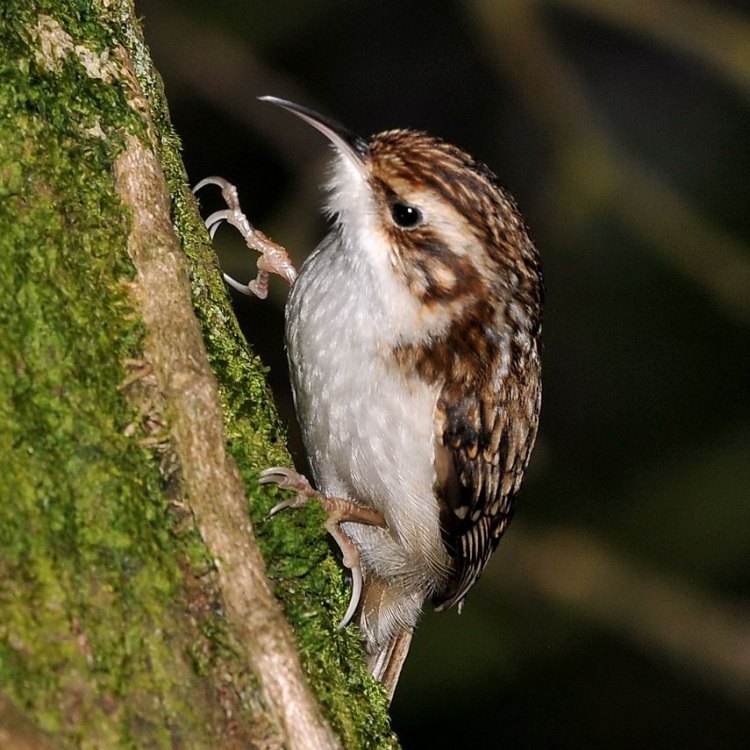
Unlocking the Mysteries of the Treecreeper: The Hidden Secrets of this Fascinating Bird
Disclaimer: The content provided is for informational purposes only. We cannot guarantee the accuracy of the information on this page 100%. All information provided here may change without prior notice.

